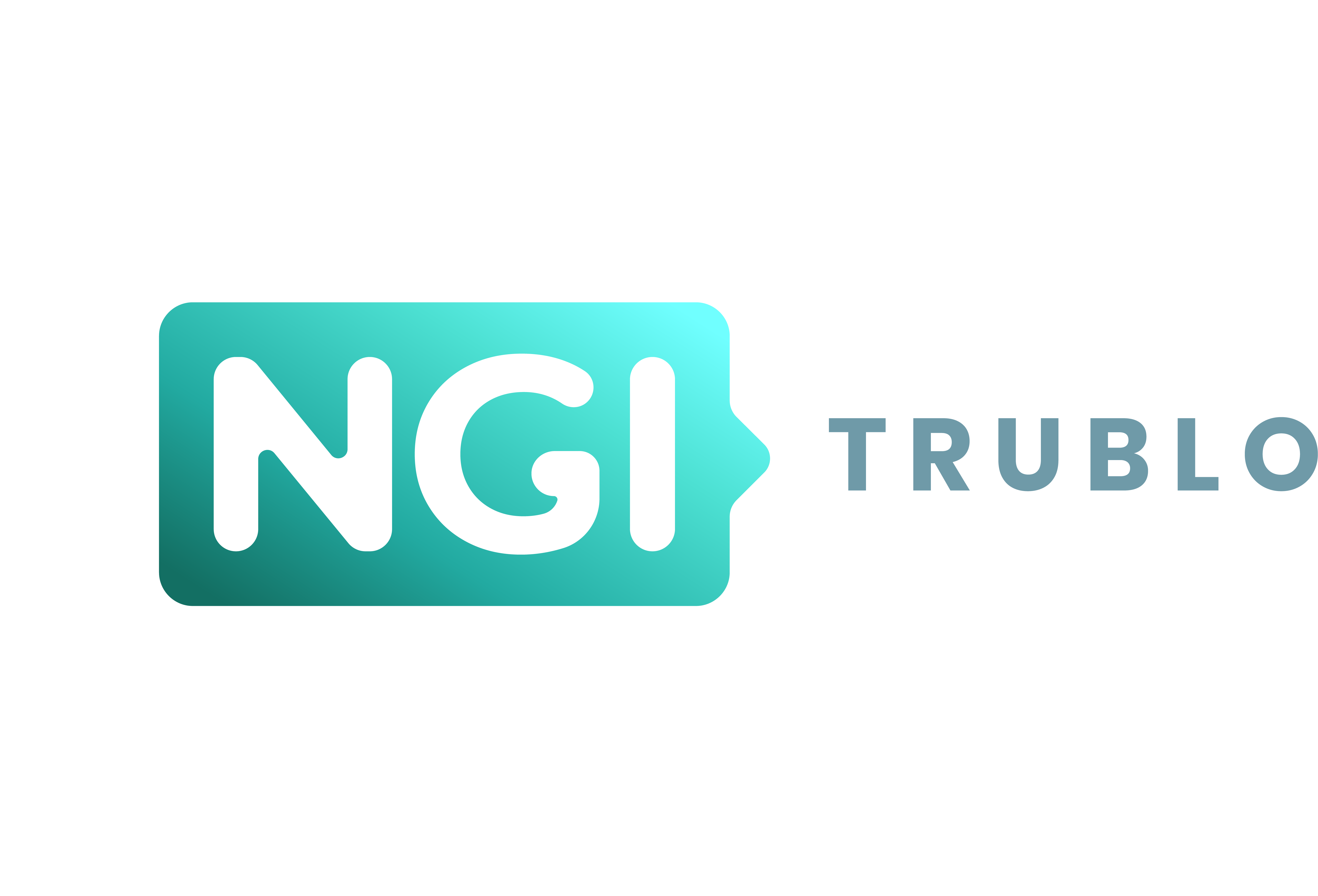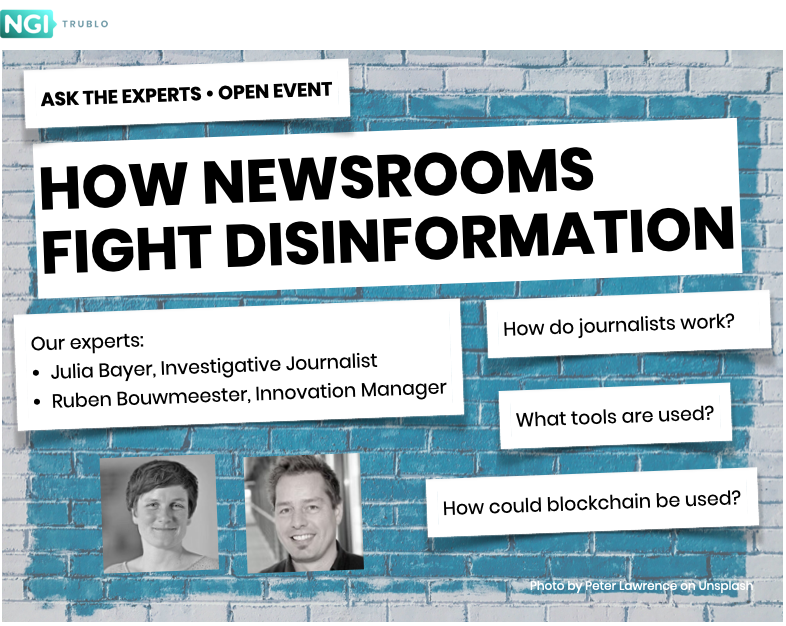
TruBlo Newsletter #28
JAN. 21, 2022
#28: Artists fear a flood of fake NFTs • Europol ordered to delete data • Stricter rules regarding crypto in Spain, Singapore and Pakistan • Future Trend Report 2022 • Blockchain Trend Report 2022
TruBlo NEWSLETTER • Trustable content on future blockchains
Newsletter #28
Your quick update from the intersection of trust, content and blockchain
Estimated reading time: 6 minutes, 18 seconds. Contains 1260 words
- Share: Share this newsletter with colleagues or friends
- Social: Follow us on Twitter for direct interactions or questions
PROJECT UPDATE
Introducing funded projects of TruBlo
D-SBOM: Distributed Software Bill of Materials
- Problem: IoT devices are essential in logistics, storage and other areas of life, leading to new security concerns. Malware targeting Linux systems increased by 35% in 2021 compared to 2020. IoT and logistics applications often depend on stacks of different software components and many interfaces to existing systems. So far, it isn’t straightforward for IT managers to see which software and which elements are part of a system.
- Solution: Asvin GmbH, the company behind D-SBOM, proposes a “Distributed Software Bill of Materials”. This would list up all the different software used in a specific set-up. The goal is to achieve much better transparency and security.
Remember: TruBlo Open Call 3 will start on January 27, 2022.
Blockchain Weather for Week 3, 2022 (January 17-23)
In each edition, we aim to summarise the current sentiment for crypto, blockchain and web3 similar to a weather report:
Still cloudy – a grey, cold January for many areas of the crypto and web3 landscape. Only few bright spots. Community is still very active, but has seemingly retracted a little to prepare for spring time and sunnier periods.
Please tell us what you think.
Updates this week:
TRUST
Artists fear a flood of fakes in the $25 billion NFT market
The market for “non-fungible tokens” (NFTs) has grown to a volume of $25 billion during 2021. But with the volume comes trouble: Because there is only lax oversight, artists now fear that there will be many fakes in the future. Reported by Reuters in a Twitter thread – good format, very informative.
Who is driving this?
An advertisement in The New York Times warned against the “full self-driving” (FSD) mode of Tesla cars this week. The headline said: “Don’t be a Tesla Crash Test Dummy”. The ad said that Tesla software has too many flaws, is unsafe and should be forbidden. The ad was paid for by “The Dawn Project”. The organisation wants to “ban unsafe software from safety-critical systems that military-style hackers can target”. The founder of the advocacy group the CEO of a company called Green Hill Software which builds systems and programming tools for embedded safety and security systems.
Privacy Protection: Police Agency Europol ordered to delete databases with personal data
Europol, the central policing agency of the EU, has been ordered to delete extensive collections of personal data because the particular databases failed to meet EU data protection standards. The order came from the European Data Protection Supervisor (EDPS), which oversees and enforces the EU GDPR privacy standards.
Fines for breaches of EU GDPR privacy regulation crossed the amount of €1 billion in 2021
EU data protection authorities have handed out a total of $1.25 billion in fines over breaches of the bloc’s General Data Protection Regulation since Jan. 28, 2021, law firm DLA Piper said in a report published Tuesday. That’s up from about $180 million a year earlier.
Spain: Stricter rules for crypto-asset advertising
It will be less easy to advertise crypto assets in Spain by mid-February. The Spanish Government demands that advertisers inform a government agency ten days before starting a campaign. The rules include using social media influencers and apply to all campaigns targeting more than 100,000 people. Read: All large campaigns will have to do this. In the future, advertisers must warn of risks.
Singapore: No advertising for crypto services in public places
New regulations will only allow advertisements on websites and mobile apps.
Pakistan: Customers are advised to avoid crypto transactions
One of the larger banks in Pakistan started to send out SMS to customers, informing them not to carry out crypto transactions. Before the Bank of Pakistan, the country’s central bank had sent a report to policymakers advising to ban all crypto activity.
CONTENT
UK: Government starts a campaign against end-to-end encryption in messaging services
What is more important? That millions of private messages are not readable by outsiders. Or should a government and authorities monitor such communication for potential threats, such as terrorism or criminal or illegal activities? The UK wants the latter, more control. The blocker is end-to-end encryption. This is why the British government will start an advertising campaign against encryption on WhatsApp and other messaging platforms. The consequences could be far-reaching for any country connected to the UK.
From the “Rolling Stone”:
“According to documents reviewed by Rolling Stone, one of the activities considered as part of the publicity offensive is a striking stunt — placing an adult and child (both actors) in a glass box, with the adult looking “knowingly” at the child as the glass fades to black.”
WundermanThompson Trend Report: The Future 100 (2022)
We are fans of this particular trend report. WundermanThompson is a global advertising agency, and as a result, the trends considered range from technology to communication to cultural movements. The study reads like a glossy magazine from the future. Many of the trends are interesting and will shape how we do business and lead our lives.
Australian Open offers tennis memorabilia as NFTs
The Australian Open is about to enter the NFT frenzy now that the drama over Novak Djokovich is (almost) over. The NFTs will be about “iconic moments” of the tournament from the last decades. Look at what is offered on Sweet (which is the platform they use).
Opinions wanted: AI4media research project launches survey
AI4Media, an H2020 research project, currently works on a Roadmap for Artificial Intelligence technologies and applications in the media sector. They are now running a survey to collect feedback and opinions from media sector representatives (news, film, TV, radio, gaming). A second survey will be shared with the AI research community.
The survey is anonymous, so there is no need to give your name or the name of your organisation. Data is not linked to respondents and is used only in an aggregated way.
Wired: Our bodies could be a new data source in the metaverse
For future entertainment in the metaverse, we will need virtual reality headsets. But these devices could collect even more data than today’s TVs or smartphones.
UK: Licence fee for BBC will be abolished in 2027 and funding frozen
“The BBC will have to negotiate with the government over an entirely new funding model when the final licence fee funding deal expires in 2027 – with potential options including a subscription service, part-privatisation, or direct government funding.” – The Guardian
BLOCKCHAIN
Crypto Theses for 2022: Free 165 pages deep dive
Written by Ryan Selkis this is an energetic, highly detailed analysis of almost all current trends. If recent views on crypto and web3 were too gloomy for your tastes, this particular report is for you. Many opinions on many different facts. Well written. Free download.
Block (formerly Square) wants to find new ways for bitcoin mining
“We want to make mining more distributed and efficient in every way, from buying, to set up, to maintenance, to mining. We’re interested because mining goes far beyond creating new bitcoin. We see it as a long-term need for a future that is fully decentralized and permissionless.”
European VC Blossom Capital raises 432m investment fund
A considerable part of the fund will be invested in technology and crypto projects.
Money laundering: Old goal, new technology
How stolen Ethereum is “mixed” to cover traces.
Quick updates:
- Indian PM links crypto to supply-chain issues, inflation – calls for international cooperation to control crypto LINK
- Ambient.ai, which uses artificial intelligence to search through security camera footage, raised $52 million VC funding from a15z LINK
Thank You for reading. Please forward this newsletter to colleagues: Click here to subscribe.
Do you have feedback or suggestions? Contact us




 Julia Bayer is an investigative journalist who dives deep online using OSINT. She has gained first-hand experience from work in the social media team of Deutsche Welle. In addition, she works as an innovation manager of the Research- and Cooperation team of Deutsche Welle. Julia is involved in a number of verification projects, such as the implementation of Truly Media and InVid. She also trains journalists in OSINT techniques and digital verification. Julia has worked with journalists in multiple international locations and has worked with newsrooms, NGOs and DW academy.
Julia Bayer is an investigative journalist who dives deep online using OSINT. She has gained first-hand experience from work in the social media team of Deutsche Welle. In addition, she works as an innovation manager of the Research- and Cooperation team of Deutsche Welle. Julia is involved in a number of verification projects, such as the implementation of Truly Media and InVid. She also trains journalists in OSINT techniques and digital verification. Julia has worked with journalists in multiple international locations and has worked with newsrooms, NGOs and DW academy. Ruben Bouwmeester brings concept development skills and profound graphical expertise. In his role as an innovation manager, Ruben was a key contributor to several software solutions and platforms used for the detection of disinformation and deep fakes. Ruben has been a key architect and manager for
Ruben Bouwmeester brings concept development skills and profound graphical expertise. In his role as an innovation manager, Ruben was a key contributor to several software solutions and platforms used for the detection of disinformation and deep fakes. Ruben has been a key architect and manager for 
